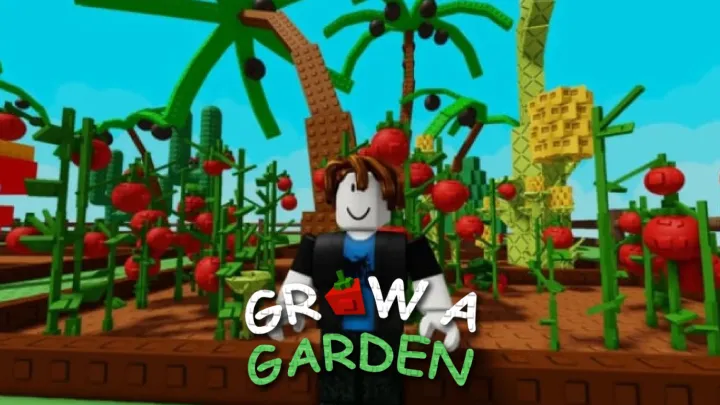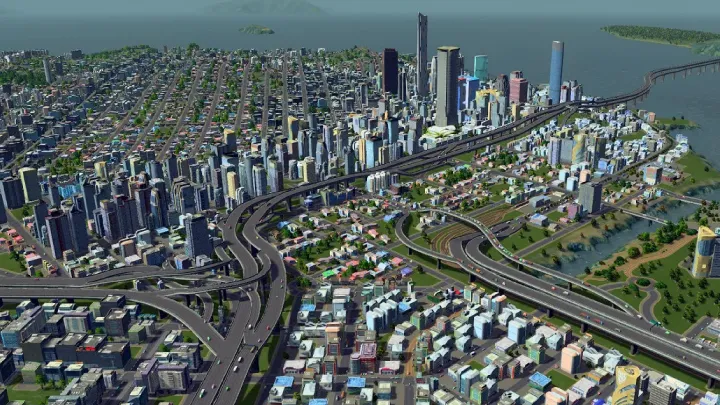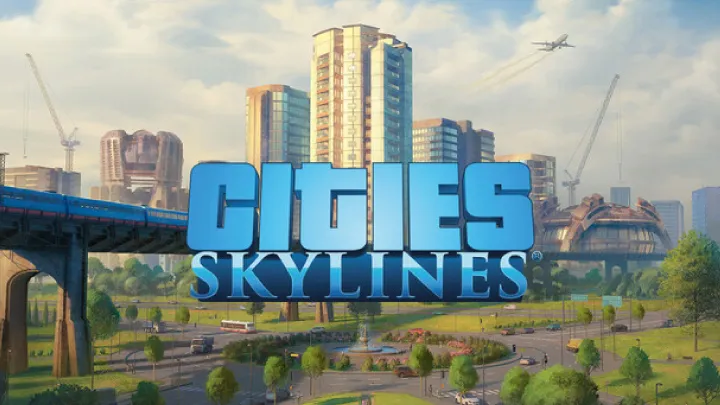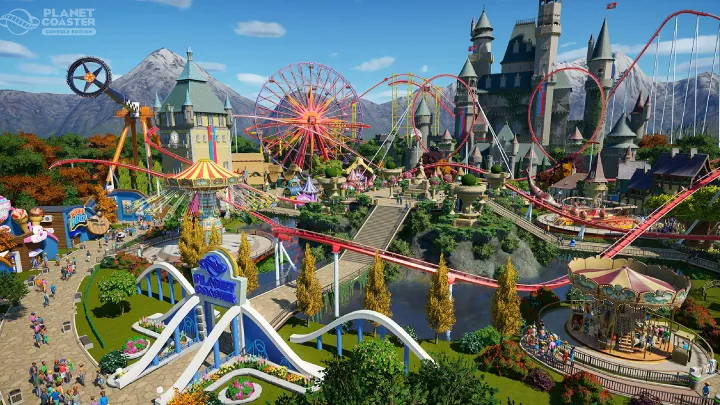Cities: Skylines is a highly acclaimed city-building simulation game developed by Colossal Order. It offers players the chance to design, build, and manage a sprawling metropolis, all while balancing resources, services, and the happiness of citizens. With its intricate mechanics and vast possibilities, Cities: Skylines provides a rich gameplay experience. This guide aims to equip both newcomers and seasoned players with essential tips and strategies to create thriving cities.
Introduction
In Cities: Skylines, players take on the role of a city planner tasked with building and managing a city from the ground up. The game presents various challenges, including traffic management, zoning, and public services, requiring thoughtful planning and strategic decision-making. Whether you dream of a bustling metropolis or a serene small town, this guide will explore key aspects of city planning, from zoning and infrastructure to managing services and addressing citizen needs.
Getting Started: The Basics of City Building
Choosing Your Map
Before diving into city building, it’s essential to select the right map.
- Map Features: Different maps offer unique geographical features, such as rivers, mountains, and resources. Consider how these features will influence your city layout and expansion.
- Accessibility: Look for maps with good access to highways and railroads. This will facilitate transportation and trade, crucial for your city’s growth.
Initial City Layout
Your initial layout can set the tone for your city’s development.
- Zoning Fundamentals: Start with a balanced mix of residential, commercial, and industrial zones. This balance will ensure a steady flow of jobs and housing for your citizens.
- Road Planning: Plan your road layout carefully. Use grids for efficient traffic flow, but don’t hesitate to incorporate curves and unique designs to enhance aesthetics.
Zoning and Land Use
Understanding Zoning Types
Zoning is a fundamental aspect of city planning in Cities: Skylines.
- Residential Zones: These areas house your citizens. Ensure they are close to amenities like schools and parks to increase happiness.
- Commercial Zones: Commercial zones provide jobs and services. Place them near residential areas to make it convenient for citizens to shop and work.
- Industrial Zones: Industrial zones are essential for producing goods. However, they can produce pollution, so situate them away from residential areas.
Advanced Zoning Techniques
Once you’re comfortable with the basics, explore advanced zoning techniques.
- High-Density Zoning: As your city grows, consider upgrading to high-density zoning. This allows for taller buildings and more residents, maximizing land use.
- Mixed-Use Development: Combine residential and commercial zones to create vibrant neighborhoods. This encourages walking and reduces traffic.
Infrastructure: Roads and Transportation
Building Efficient Road Networks
An efficient road network is crucial for maintaining smooth traffic flow.
- Road Types: Familiarize yourself with different road types, including one-way streets, highways, and pedestrian paths. Each type serves a specific purpose in managing traffic.
- Intersections and Roundabouts: Use roundabouts and traffic lights wisely. Roundabouts can help reduce congestion at busy intersections.
Public Transportation Options
Investing in public transportation can alleviate traffic and improve citizen satisfaction.
- Buses and Trains: Implement bus and train routes to provide alternatives to driving. Ensure stations are conveniently located to maximize usage.
- Subways and Trams: Consider building subway systems in densely populated areas. They efficiently transport large numbers of citizens without adding to surface traffic.
Managing Services and Utilities
Essential Services
Providing essential services is key to keeping your citizens happy.
- Water and Sewage: Ensure that your city has access to clean water and a proper sewage system. Monitor water availability and pollution levels regularly.
- Electricity Supply: Diversify your energy sources, using renewable options like wind and solar where possible. This will help reduce costs and environmental impact.
Emergency and Health Services
Emergency services are critical for maintaining public safety.
- Fire and Police Stations: Strategically place fire and police stations to cover high-density areas. This will help reduce crime and respond quickly to emergencies.
- Healthcare Facilities: Invest in hospitals and clinics to improve public health. Ensure these facilities are accessible to all citizens.
Addressing Traffic Management
Identifying Traffic Problems
As your city grows, traffic management becomes increasingly important.
- Traffic Flow Analysis: Use the traffic overlay view to identify congestion hotspots. Analyzing traffic flow will help you make informed decisions about infrastructure improvements.
- Public Feedback: Pay attention to citizen complaints about traffic. Addressing their concerns can enhance satisfaction and reduce frustration.
Strategies for Reducing Congestion
Implement strategies to alleviate traffic congestion effectively.
- Dedicated Lanes: Create dedicated lanes for buses and bicycles to encourage alternative modes of transport. This can help reduce the number of cars on the road.
- Traffic Management Policies: Utilize policies like congestion charges or reduced speed limits in busy areas to manage traffic flow.
Enhancing Citizen Happiness
Meeting Basic Needs
To keep your citizens happy, you must meet their basic needs.
- Education: Provide access to schools and universities. Educated citizens contribute positively to the economy and overall city development.
- Leisure Activities: Create parks, recreational facilities, and cultural venues to enhance quality of life. Happy citizens are more productive and engaged.
Addressing Pollution and Noise
Managing pollution and noise is essential for citizen satisfaction.
- Pollution Control: Implement measures to reduce air and water pollution. Consider using cleaner industrial options and increasing green spaces.
- Noise Management: Place noisy facilities away from residential areas. Use sound barriers and landscaping to mitigate noise pollution.
Expanding Your City
Planning for Growth
As your city expands, careful planning is essential.
- New Zones: Identify areas for new zones based on demand. Monitor population growth and adjust zoning accordingly to accommodate new residents and businesses.
- Transport Expansion: Expand your transportation network as your city grows. New roads, public transport routes, and facilities should be integrated into your expansion plans.
Utilizing Resources Effectively
Make the most of the resources available to your city.
- Natural Resources: Utilize natural resources strategically. Extract resources like oil or minerals only when needed, and consider the environmental impact.
- Trade and Industry: Establish trade routes with neighboring cities. This can boost your economy and provide access to goods not available locally.
Utilizing Mods and Community Content
Exploring Mods
The Cities: Skylines community offers a wealth of mods that can enhance your gameplay experience.
- Finding Mods: Browse the Steam Workshop for popular mods that add new features, assets, or gameplay mechanics. Mods can significantly expand the possibilities in your city.
- Installing Mods: Install mods carefully, and check for compatibility. Some mods may conflict with others, so read user reviews before adding them to your game.
Creating and Sharing Content
Consider creating your own content to share with the community.
- Custom Assets: Use asset creation tools to design custom buildings, parks, and vehicles. Sharing your creations can inspire others and enhance the game for everyone.
- Participating in Challenges: Engage with community challenges to test your city-building skills. These challenges often focus on specific themes or constraints, providing a fun way to explore new ideas.
Conclusion
Cities: Skylines is a rich and rewarding city-building simulation that allows players to unleash their creativity and strategic planning skills. By following the tips and strategies outlined in this guide, players can create thriving cities that balance the needs of citizens with the challenges of urban management. From zoning and infrastructure to traffic management and community engagement, each aspect of city building contributes to the overall experience. Embrace the complexities of urban planning, and enjoy the journey of crafting your dream city in Cities: Skylines.


















